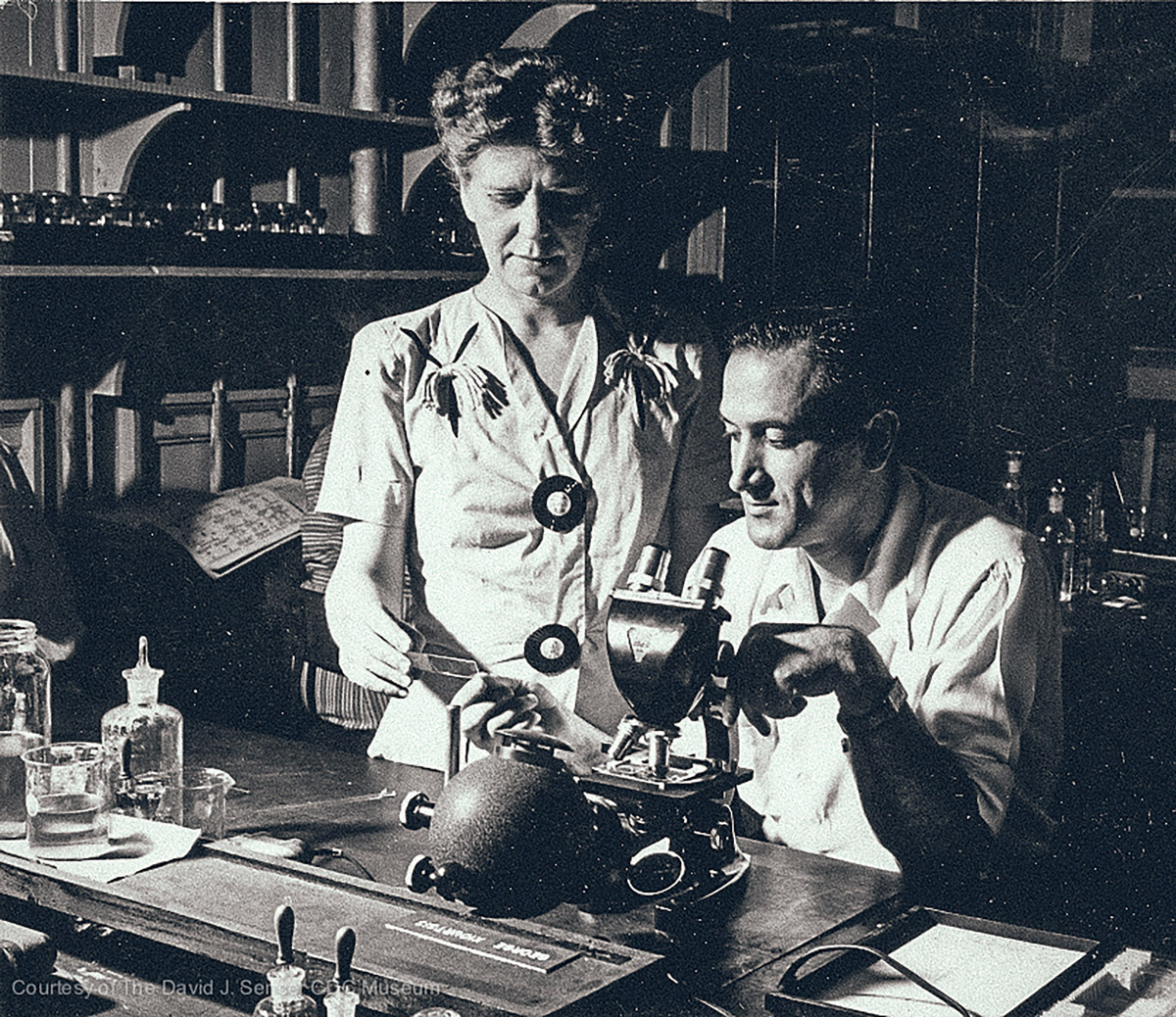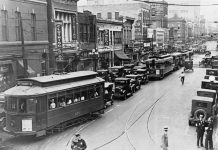
Photograph courtesy of Centers for Disease Control and Prevention
After the surrender of Japan ended World War II, scientists and researchers from the Malaria Control in War Areas, a wartime federal agency created to eradicate the disease around bases in the southern United States and its territories, started transitioning into their jobs at the newly created Communicable Disease Center. Housed on the sixth floor of the Volunteer Building on Peachtree Street in downtown, the agency’s 400 employees focused on wiping out the mosquito-born virus with nets, engineering, and DDT. But Dr. Joseph Mountin, a pioneer in the world of public health, pushed to expand its mission to other diseases. In 1960, with the help of Coca-Cola tycoon and philanthropist Robert Woodruff, the quickly growing agency moved to 15 acres of former woodlands on Clifton Road, which it had purchased for $10 from Emory University. Today, thousands of the CDC’s employees work to prevent and contain everything from the common cold to anthrax, solve medical mysteries (its sleuths once determined a strange rash among flight attendants was caused by ink in demonstration flotation devices), and educate the public about the germs, viruses, and diseases that can cripple a country.
This article appears in our July 2019 issue.













